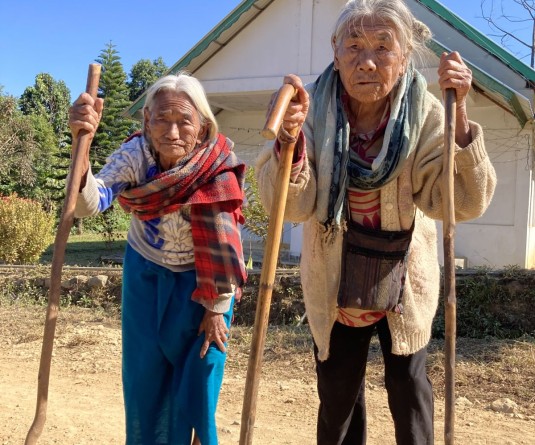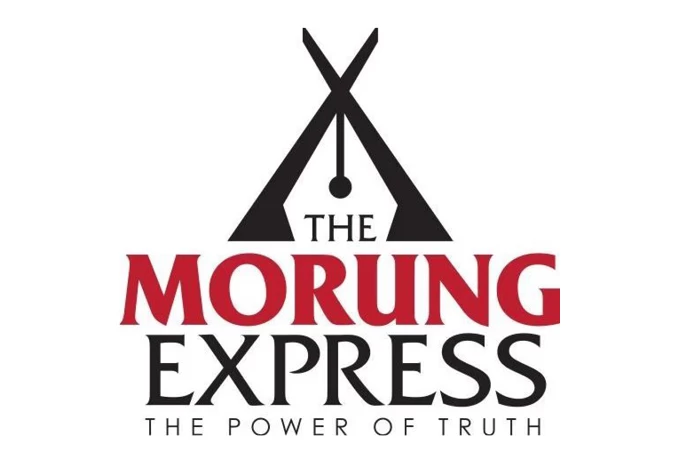
Kaka D. Iralu
Of late, there have been attempts to twist Naga history in favour of the moderates of yesterday’s NNC leaders. In the attempt, A. Z. Phizo and all our courageous leaders of yesterday are being projected as some violent Naga leaders who were out and out for a violent confrontation with India. The other moderate leaders are projected as the saner and more practical leaders whose voice of caution about impending consequences went unheeded by the violent Naga mob under the leadership of the extremist NNC leaders. In this projection, A.Z. Phizo had even been accused of saying that “Violence would be the lifeblood of Naga politics”. (These words were stated by Nirmal Nibedon in his book, Nagaland, the Night of the Guirillas, page 66).
Here, though self-appointed, as a Naga historian, I feel duty bound to set the record straight so that future generation of Nagas will be able to know the truth. I also make this clarification so that the deaths of the thousands of our national heroes who died in violent self-defence actions would not be marred by dishonourable conclusions.
To begin with, from its very inception on February 2, 1946, the NNC adopted a non-violent policy for the pursuit and achievement of its political goals. This policy was followed both in letter as well as in practice from 1946 until March 24, 1954. (The first Naga counter attack against the Indian army was launched on this day at Huker and Panger villages by the Yimchungers). The following chronologically arranged events will show that the NNC followed a non-violent policy until this date.
1. From 1946 to 1953, all the important political actions like the declaration of Naga independence on 14th August 1947 or the announcement of a sovereign Naga state on December 30, 1949, or the conduct of the national plebiscite of May 16, 1951, or the non-participation in the first Indian general election of 1952 were all done in a non-violent manner. In fact, after the plebiscite, the NNC had even offered that they were ready to be under an Indian President in a independent Nagaland for a stated period. At this point of our history, non of the NNC leaders were moving around with armed escorts nor was there any talk of an armed uprising. Also up to March 30, 1953 (visit of Nehru and U Nu to Kohima), there were no two opinions about Naga sovereignty and independence among the Nagas. The whole Naga independence movement was up to this stage, a united Naga national movement.
2. This non-violent movement went on despite violent provocations from the Indian side. For example, three Mao Nagas were shot to death by the Assam Rifles on Aug 27, 1948, when the Mao Nagas were on a peaceful march refusing to pay house tax to the Manipur Maharaja. In this shooting another four were also seriously injured. Two other Nagas were also killed in Tuensang in the same year. Then again, when some Nagas were on a peaceful march in Kohima protesting against the gruesome torture of a Sema boy in Dimapur, Zasibeito Nagi a Judge of the Kohima Court was shot to death on October 18, 1952.
3. In the midst of all these non-violent activities, the coming of Nehru and U Nu to Manipur and Kohima on March 30, 1953 changed the whole peaceful atmosphere. Nehru and U Nu, in defiance of all the wishes of the Nagas came to survey and divide the British bequeathed Naga lands between themselves. They came with great confidence in themselves because for the first time, after nearly two hundred years of oppression and subject-hood, they were now independent nations equipped with many arms left behind by their former oppressors. They perhaps thought that it was now their turn to oppress and rule. To them, the Nagas were only some wild tribesmen whose lands they could occupy without any problem.
Their confidence and arrogance were rudely shattered when the Naga delegation walked out from the Kohima local ground in protest against their arrogance. Following their departure from Kohima, arrest warrants were issued to all the NNC leaders. The Naga freedom movement from thenceforth went underground. Now the non-violent NNC leaders were compelled to keep armed bodyguards around them. On March 30, 1953, Khonoma, the village of the NNC President was raided. This was followed by the raid on Longkhum, the village of the NNC Vice President. Unable to hide anymore in and around Kohima or Mokokchung, many of the NNC leaders including A.Z. Phizo slipped into the Tuensang division to hide in the Yimchunger, Chang, Konyak and Khaimuingan regions of Free Nagaland.
4. While hiding in these regions, the NNC leaders along with the active participation of the regions declared the first Naga Hongking Government on September 18, 1954. Following these events, the first violent act by the Indian Government was unleashed on the Nagas when under India’s instigation, on November 15, 1954, sixty-three villagers of Yongpang in Tuensang area were killed. Most of these villagers were beheaded. Taka Temjen, the youth promoter of the NNC and some of his colleagues were also killed in this attack. Next, on November 27, 1954, the NNC village of Chingmei was destroyed by bombardment assisted by one battalion of paramilitary forces. Between 1954 and January 1955, several NNC strongholds in these regions were attacked by Indian forces especially in the Lemnyu and Wui areas. Between January and March 1955, the villages of Changtongyia, Lungkhum, Chungtia Mokokchung, Changlangshu, Chingkhoa etc in the Nagaland side were also attacked. In these attacks, many villagers were raped, tortured and even shot to death.
5. By March 31, 1955, the Vice President of the Naga National Council had sent the following cable message to the United Nations, with copies to the government of India and all foreign ambassadors in New Delhi.
“Reports reaching Kohima say that more ten thousand men, women and children in the free Naga areas believed to have been killed by the Indian troops within last few days of whole scale massacre… urgently appeal to you in the name of humanity to intervene and stop killings…”
In the light of all these historical facts, for the any Naga writer to infer that A.Z. Phizo and the moderate Naga leaders of the NNC parted ways in 1956, due to Phizo’s insistence on violence is sheer nonsense. In fact, far from any co-operation talk, the Indian army was already wantonly massacring Naga citizens even as early as November 15, 1954.
In this context, the only co-operation proposal agreed to by the NNC was the Akbar Hydari Agreement of June 1947. But even this agreement was not honoured by the Indian government. In fact, right after the signings of the Agreement, Akbar Hydari had threatened the NNC that would be used against the Nagas if they did not agree to become a part of India. In the later part of 1955, Nehru’s agent (and often, Nehru’s critic), Mr. Purwar is purported to have brought some co-operation proposals behind the NNC’s back. These proposals were however never disclosed or discussed with the NNC leadership. Hence, any proposals for co-operation with India at this stage was secret and without the NNC’s knowledge.
As for the accusation that Phizo and his colleagues were for a violent confrontation with India, neither Phizo nor Zushei Huire or Thongti, etc, were imbeciles who could foolishly think that Nagas could win their independence through violence. These NNC leaders had all seen the devastation of South East Asia through the Second World War between 1943-1944. They also knew that India and Burma were militarily well equipped enough to destroy Nagaland in a few months.
The actual fact at this stage of Naga history was one where a non-violent and just political movement had been attacked unbelievable violence. The Indian army had already unleashed that violence as early as November 15, 1954. Hence, the inference of a serious debate on violence and non-violence raging in the NNC camp in January 1956 can be only a fiction of the imagination. Far from such a fiction, the horrifying reality that was confronting the NNC leadership then, was one of whether to surrender all the Naga political rights to the Indian army violence or to defend those rights with counter self-defence measures. At stake was the proud history of the Nagas and their hope for better future. The choice was one of whether the Naga Nation would surrender themselves to become a mere district under Assam or to defend their already declared Nationhood. Faced with such a dilemma and despite all the overwhelming odds facing them, these brave Naga leaders nevertheless chose to defend their history and their future.
Now, after 59 years of heroic defence of our rights where thousands upon thousands of our young men have sacrificed their lives, who are these Nagas of today who are accusing the leaders of yesterday as being guilty of violent dispositions which has led the Naga Nation to ruins?
Let the Nagas get this fact very clearly into their heads that violence was never something we initiated or were bent on unleashing. On the contrary, despite all our efforts for a non-violent recognition of one anothers’ rights with Indian and Burma, violence was forced on us by them. When this violence was unleashed upon us, we resorted to counter measures because we could not stand by and watch our villages burnt to ashes and our women raped to death. In the counter measures some over two hundred thousand Naga have perished.
On the other hand, some less honourable Nagas treacherously co-operated with India and bought an Indian state into Nagaland. Here please do not try to project those Nagas who ran away from the fight for Naga independence as the non-violent heroes of the past 59 years of bloody Naga history. No, no, they are not the heroes and even what they got from the Indian government was not because of the heroic non-violent stand. Let every Naga know this fact that even the Nagaland State that we got as a political bargain, was because of the thousands who sacrificed their lives to defend Naga independence.
In conclusion, at the end of 50 years of blood and tears, let no Naga ever think that we have brought this violence upon ourselves. It is indeed true that in the violence that engulfed our hills and mountains, many of our “moderate” leaders also perished. Among them, I also weep for T. Sakhrie, the visionary dreamer of an independent Nagaland. I cannot but hold my breath, when I read his writings or sing the songs that he composed. I can only think that perhaps it was the romantic and poetic spirit in him that made him to recoil and walk away from the violence that he saw was coming to engulf his Naga dream. As for his untimely death, he did not deserve to die like that, when he had so eloquently done so much in laying the foundation of the Naga Nation.
However, since his clansmen had already graciously chosen to forgive those who had killed him, let us also lay his soul to rest in peace. Indeed, let us lay to rest the souls of all our heroes who died in the violence that have engulfed our lands for the past half a century. As for the living, let us continue to fight until freedom is finally achieved so that our dead would not have died in vain. As for violence or non-violence, let us remember that despite all our efforts at non-violence, we were inflicted with violence by India and Burma. God forbid that we accuse that violence on one another or worst still, inflict that violence on one another through fratricidal killings.




